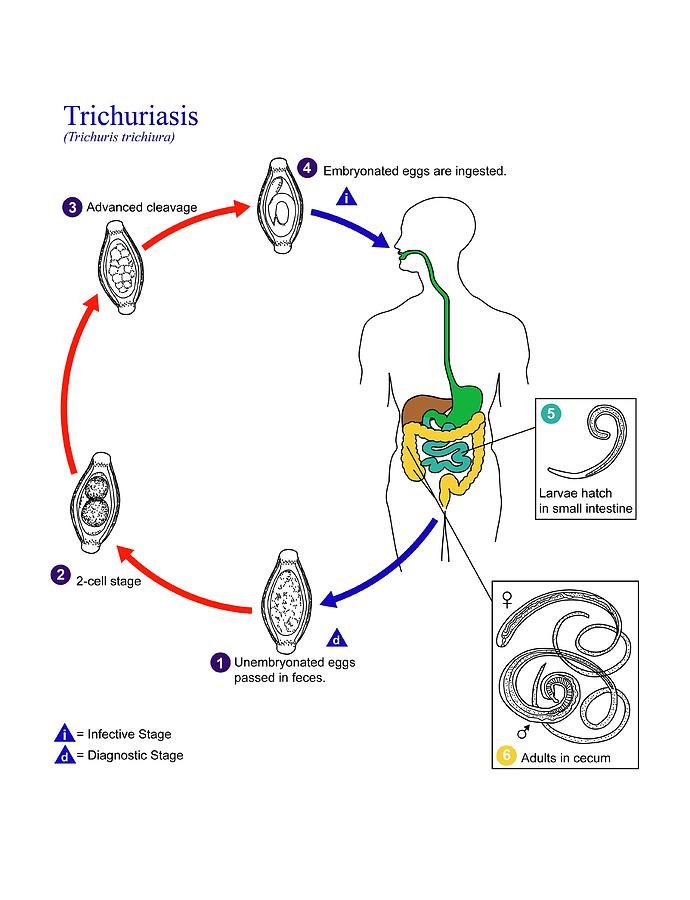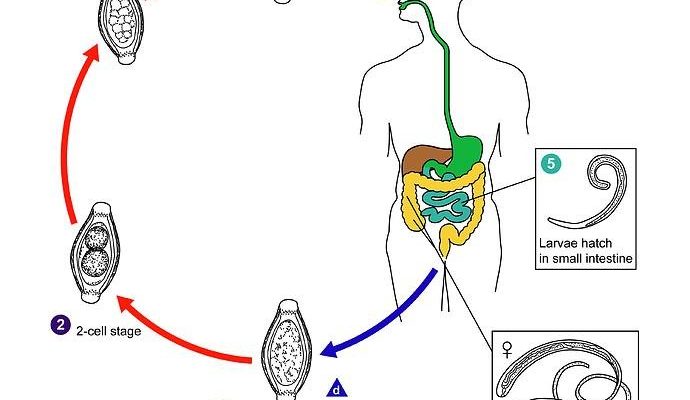
Honestly, understanding the life cycle of the whipworm isn’t just about its biology; it also opens a window into how it impacts health and how we can manage its effects on hosts. Think of it like peeling back layers of an onion. With each layer, you discover more about how these tiny creatures work and their roles in the ecosystems and hosts they inhabit. So, grab your favorite drink, and let’s unravel the story of whipworms together!
What Is A Whipworm?
Before we get into the nitty-gritty of its life cycle, let’s clarify what a whipworm really is. Whipworms belong to the genus *Trichuris* and are well-known for their whip-like appearance. They can grow up to 5 centimeters long and have a thin, whip-like tail that gives them their name. This fascinating parasite primarily occupies the intestines of its host, often causing a condition known as trichuriasis.
Most infections occur when people ingest whipworm eggs from contaminated food or water. Imagine picking up your favorite fruit and unknowingly introducing these little eggs into your system! Once inside, they begin their life cycle, leading us to their various stages of development.
The Egg Stage
The life cycle of the whipworm kicks off with its eggs. Adult whipworms produce eggs that are shed in the host’s feces. Surprisingly, these eggs are incredibly resilient, able to survive outside the host for long periods. If conditions are right—like warmth, humidity, and soil—these eggs can develop into an infectious form in about two months.
You might be wondering how many eggs a single whipworm can produce. Well, it’s impressive! An adult female can lay around 3,000 eggs per day. That’s like having a mini factory of tiny, resilient eggs ready to infect new hosts. Once they’re in the soil, they can remain viable for years, waiting for their next opportunity to hop onto an unsuspecting host.
The Larval Stage
After a host ingests whipworm eggs, the magic really begins. Once the eggs hatch in the intestines, they release larvae that quickly burrow into the intestinal wall. Here’s the thing: this stage is crucial for their survival. The larvae will grow and develop into adult whipworms over the next 2-3 months.
During this larval stage, they feed on the host’s tissue and nutrients. While it might sound a bit gross, this is their way of surviving and thriving. The larvae will continue to grow, feed, and establish themselves in the host’s intestines, often leading to various gastrointestinal symptoms, including abdominal pain and diarrhea.
The Adult Stage
Once the whipworm larvae mature, they transition into the adult stage. Adult whipworms can live for several years inside a host. They anchor themselves in the intestinal lining using their whip-like tails, which is pretty clever! This allows them to feed on the host’s nutrients while being somewhat protected from the host’s immune system.
At this point, the adults are ready to reproduce, continuing the cycle. They release eggs that exit the host through feces, and the whole life cycle starts anew. Some people may experience symptoms like anemia or malnutrition due to the whipworm’s feeding habits, but many may not even know they’re infected.
Behavior and Adaptations
Whipworms are fascinating not just for their life cycle but also for their behavior and adaptations. These parasites have developed unique strategies to survive in their environment. For example, their eggs can withstand extreme conditions, such as temperature changes and even drought.
Whipworms are also known for their ability to evade the host’s immune response. They do this by secreting substances that help them remain undetected. It’s a bit like a magician pulling a rabbit out of a hat without anyone noticing! This clever trick allows them to thrive within the host for years, ensuring they can continue their life cycle without interruption.
Additionally, whipworms tend to prefer specific hosts. While humans are a primary target, they can also infect other mammals, showcasing a potential for cross-species transmission. This adaptability is a key factor in their survival and spread, making them a significant concern in areas with poor sanitation.
Impact on Human Health
You might be surprised to learn that whipworms are quite prevalent in parts of the world, especially in tropical and subtropical regions. They often thrive in areas with poor hygiene and sanitation, making them more of a risk for people in underdeveloped regions.
Infected individuals may experience a range of symptoms, from mild gastrointestinal discomfort to more severe health issues, especially in children. Whipworm infections can lead to nutritional deficiencies, stunted growth, and learning difficulties. Public health measures, like improving sanitation and hygiene practices, play a crucial role in controlling whipworm infections.
Prevention and Treatment
So, how can one prevent whipworm infections? The best approach is simple: maintaining good hygiene. Washing hands thoroughly, especially before meals, can significantly reduce the risk of ingesting whipworm eggs.
In areas where whipworms are more common, regular deworming programs can help control infections. Medications like mebendazole or albendazole are often used to treat whipworm infections effectively. It’s like having a clean-up crew that goes in and helps restore balance.
Education also plays a crucial role. Communities can benefit from learning about how whipworms spread and how to prevent infections, creating a healthier environment for everyone involved.
The life cycle of the whipworm is a remarkable journey, showcasing the adaptability and resilience of these tiny parasites. From eggs to larvae and finally to adults, each stage is vital for their survival and propagation. Understanding this cycle is crucial—not just in grasping how these worms operate but also in recognizing their impact on human health.
By maintaining good hygiene and implementing preventive measures, we can significantly reduce the risks associated with whipworm infections. It’s all about making informed choices that contribute to better health for ourselves and our communities. So, the next time you think about worms, remember the whipworm’s incredible journey and consider how our actions can shape their presence in our lives.

